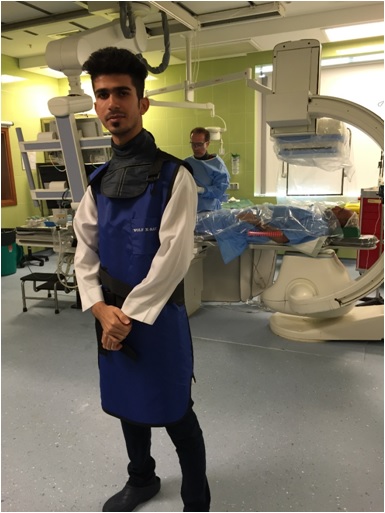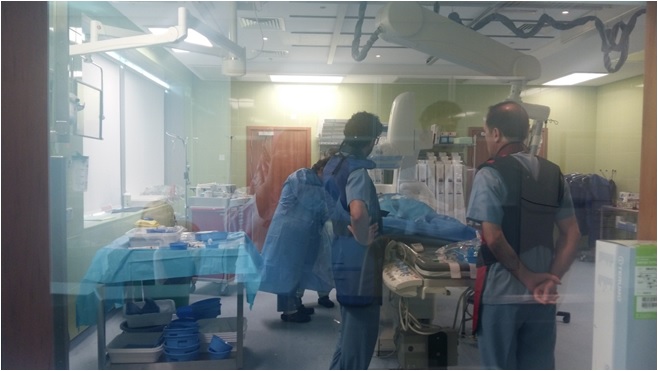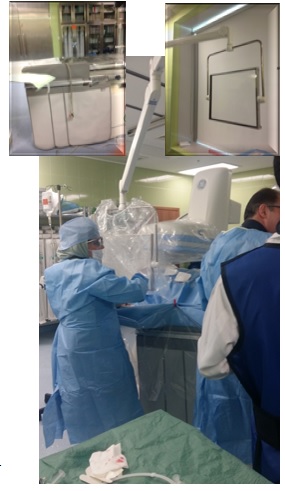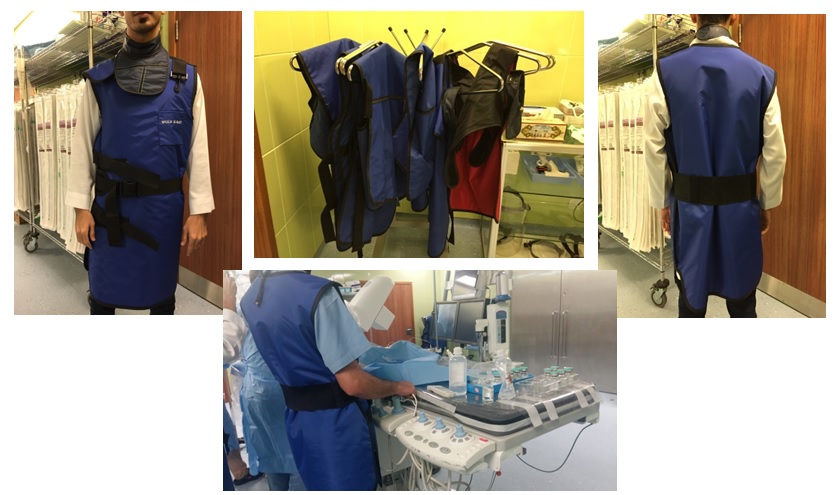Radiation Protection Shields
Introduction
- Ionizing radiation is used extensively in Cath-lab/Ep-lab. The radiation is associated with a small but definite stochastic risk of inducing a malignant
- disease.
- However, low-dose radiation exposure has also been shown to induce an increase in the number of circulating lymphocytes and chromosome aberrations, which represent surrogate biomarkers of cancer risk. The long-term cancer risk increases with increasing cumulative dose and there is no known threshold value.
- Furthermore there is a deterministic risk of skin damage both to the patient and the operator, as well as a small risk of eye injury to the operator.
- The risk by radiation exposure to the operator is not negligible when he/she must have in many procedures per year for more than 20 years.
- Ionizing radiation is used extensively in Cath-lab/Ep-lab. The radiation is associated with a small but definite stochastic risk of inducing a malignant disease.
- Both the patient and the operator are exposing to a deterministic risk of skin damage. (small risk of eye injury to the operator)
- The risk by radiation exposure to the operator is not negligible when he/she must have in many procedures during a year for more than 20 years.
- The long-term cancer risk increases with increasing cumulative dose and there is no known threshold value.

- Distance from the source of radiation must stand maximized. (The operator to stand away from the tube as much as possible)
- Even small increase of distance from the source will reduce the intensity of radiation by 4-fold.
- Anyone who is not needed inside the room should leave.
- All members of the staff should keep their distance from the radiation source at all times, but be ready to attend the patient, or assist the operator on demand.

Radiation shields
- Shielding of personnel from the radiation is very important. The radiation shields come in several types.
- Ceiling-mounted radiation protection screen that is adjustable to the patients position and size. These shields protect the team (the operator and the assisting staff) from the scattered radiation.
- Lower shields attached at the table sides (protection from the scattered radiation off the posterior aspect of the supine patient also radiation generated by the tube, which is located beneath the patient)
- These shielding drapes significantly protect the operator from scattered radiation. In some cases these shields are not connected to the tables themselves, but are free-standing. (protect the operators legs and feet, which are among the most exposed body parts of the operator)
- Further shielding in the walls, floors, and the ceiling of the cath lab in order to protect the people outside the cath lab.

Personal protection of the staff
- The staff inside the Cath lab must also wear the personal protection, which comes in several types and sizes. It is crucial that one wears an adequate size protection garments
- Firstly, lead apron should be worn. They come in different lead- or lead-equivalent thickness, and can weigh some 15 kg. The minimum of protection is the equivalent of 0.5 mm of lead at the front.
- It is advisable to wear the aprons which cover both the front and the back of the person.
- A two piece (blouse-plus-skirt design) is preferred by some operators.
- Another shield can be worn around the neck to protect the thyroid, neck tissues and organs. (Thyroid protection collar)
- An additional small apron can be worn around the waist to increase the protection of the gonads.
- Wearing leaded eyeglasses can protect eyes when exposed to radiation over a prolonged period of time, or using face-masks which are secured on the head. Protective eyewear must have at least the equivalent of protection of 0.5 mm of lead.
- It is recommended that leaded caps should also be worn.
- Radiation Protection Gloves(lead) also can be use.
- Outside personal dosimeter (in the pocket) is also necessary.
Personal protection for members of the staff in the cath lab
